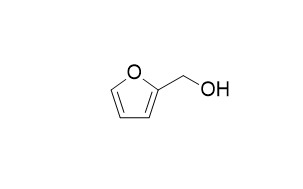Furfuryl alcohol
Furfuryl alcohol as corrosion inhibitor for N80 steel in hydrochloric acid.
Inquire / Order:
manager@chemfaces.com
Technical Inquiries:
service@chemfaces.com
Tel:
+86-27-84237783
Fax:
+86-27-84254680
Address:
1 Building, No. 83, CheCheng Rd., Wuhan Economic and Technological Development Zone, Wuhan, Hubei 430056, PRC
Providing storage is as stated on the product vial and the vial is kept tightly sealed, the product can be stored for up to
24 months(2-8C).
Wherever possible, you should prepare and use solutions on the same day. However, if you need to make up stock solutions in advance, we recommend that you store the solution as aliquots in tightly sealed vials at -20C. Generally, these will be useable for up to two weeks. Before use, and prior to opening the vial we recommend that you allow your product to equilibrate to room temperature for at least 1 hour.
Need more advice on solubility, usage and handling? Please email to: service@chemfaces.com
The packaging of the product may have turned upside down during transportation, resulting in the natural compounds adhering to the neck or cap of the vial. take the vial out of its packaging and gently shake to let the compounds fall to the bottom of the vial. for liquid products, centrifuge at 200-500 RPM to gather the liquid at the bottom of the vial. try to avoid loss or contamination during handling.
Anal Biochem.2019, 569:10-15
Biomed Pharmacother.2020, 131:110673.
Dis Markers.2022, 2022:2380879.
Prev Nutr Food Sci.2024, 29(4):563-571.
Biochem Biophys Res Commun.2018, 505(4):1148-1153
Int J Mol Sci.2023, 25(1):283.
Sci Rep.2018, 8:9267
Korean J Acupunct2020, 37:104-121
Front Immunol.2024, 15:1423776.
Phytomedicine.2019, 61:152813
Related and Featured Products
Corrosion Science, 2008,50(11):2999-3004.
Furfuryl alcohol as corrosion inhibitor for N80 steel in hydrochloric acid.[Reference:
WebLink]
The ability of Furfuryl alcohol (FA) as corrosion inhibitor in controlling corrosion of N80 steel in 15% hydrochloric acid has been investigated.
METHODS AND RESULTS:
It is found that the percentage inhibition of FA increases almost linearly with its concentration (in the range 10 mM–80 mM) and attains about 91% at 80 mM. FA shows significant inhibition at higher temperatures also (∼82% at 60 °C;∼74% at 110 °C with 80 mM concentration). FA undergoes acid catalyzed polymerization under the experimental conditions to give polyFurfuryl alcohols (PFA) as evidenced by FTIR and NMR spectral data. Thermodynamic parameters for the corrosion of steel in presence and absence of the inhibitor have been calculated. The inhibitive action may be attributed to adsorption of inhibitor molecules on the active sites of the metal surface following Temkin adsorption isotherm.
METHODS AND RESULTS:
Potentiodynamic polarization curves indicate that FA acts as mixed type inhibitor. A plausible mechanism for the mode of inhibition has been proposed.
Chemsuschem, 2009, 2(6):437-441.
Conversion of Furfuryl Alcohol into Ethyl Levulinate using Solid Acid Catalysts.[Reference:
WebLink]
Furfural, a potential coproduct of levulinic acid, can be converted into levulinic acid via hydrogenation to Furfuryl alcohol and subsequent ethanolysis to ethyl levulinate. The ethanolysis reaction is known to proceed in the presence of H2SO4.
METHODS AND RESULTS:
We show here that several strongly acidic resins are comparably effective catalysts for this reaction. Optimal performance is achieved by balancing the number of acid sites with their accessibility in the resin. Acidic zeolites such as H-ZSM-5 also catalyze this reaction, although with a lower activity and a higher coproduction of diethyl ether.



